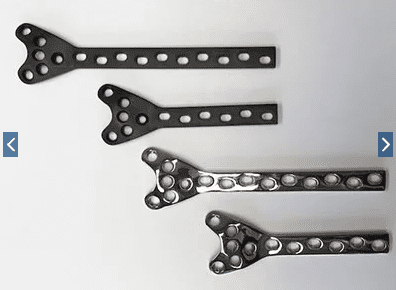Trauma fixation devices have come a long way since their early days. The designs have changed over the years, but, more importantly, so have the materials used during production. Experimentation with high-performance polymers has led to devices that are lower in weight, stronger, and not bio-active.
Devices crafted out of high-performance polymers have proven extremely useful in the medical industry, especially when it comes to fractured or broken bones and tissue degeneration.
There are two basic types when it comes to these devices – internal and external applications.
Internal Applications
These are often required in the case of a severe fracture or compound fracture. The device is implanted to provide support and to help the body to heal itself. The primary concern with such devices is that they are biologically inactive and durable enough to last through a more extended treatment period.
High-performance polymers are an excellent fit here. They are not affected by the processes within the body, provide firm support as necessary, and are lightweight and less expensive than standard options.
In addition to the actual device itself, screws, wires, and plates might be required here.

External Applications
In this instance, we’re talking about the same sort of devices that may have been used in Ancient Greece. They are not implanted as such, and the body of the device rests outside the skin. However, the device does get screwed into the bone to ensure that it stays in place.
It’s not ideal for a more complicated fracture, but it can be useful in more straightforward cases, or as support until surgery can be scheduled.
Which Option is Better?
That is going to depend on the physician who is treating the patient, and determined on a case by case basis. The nature of the injury and the type of patient will determine the ultimate treatment solution to be used.
An eighty-year-old woman who falls and breaks her hip, for example, is going to need a lot more support than a twenty-six-year-old who broke her arm.
Do We Need More Trauma Fixation Devices?
If you look at the range of devices on the market at the moment, it might seem that the market is already saturated. That is true, but there’s always room for improvement. What’s also true is that the devices are in high demand and will continue to be for a long time in the future.
In the United States, we have an ever-increasing geriatric population. We’re living longer lives and are more likely to need support as we age. The older we get, the more brittle our bones become and so the higher the chances of breaks or fractures occurring.
Bringing it All Together
High-performance polymers have already started to revolutionize the trauma fixation device industry. They are strong, lighter in weight, bio-inactive, and extremely durable. As long as they are correctly handled, the polymers offer a viable alternative to stainless steel plates and pins.
Partnering with a firm that understands how to get the best fit regarding polymers and additives is essential to the success of your new design. We’ll walk you through each stage of the process, so give us a call and find out what we can do for you.




